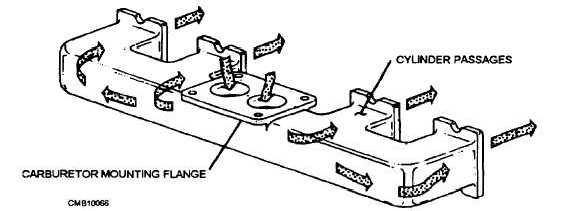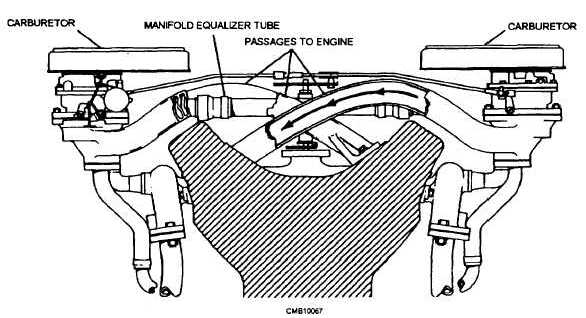
Figure 3-15. - Typical intake manifold.
walls and a minimum of bends that collect fuel to reduce the condensing of the mixture. Smooth flowing intake manifold passages also increase volumetric efficiency.
Aid in the vaporization of the air-fuel mixture. To do this, provide the intake manifold a controlled system of heating. This system of heating must heat the mixture enough to aid in vaporization - without heating it to the point of reducing volumetric efficiency.
The intake manifold on an L-head engine is bolted to the block, whereas the overhead-valve engine has the intake manifold bolted to the side of the cylinder head.
Intake manifolds can be designed to provide optimum performance for a given speed range by varying the length of the passages (fig. 3-16). The inertia of the moving intake mixture causes it to bounce back and forth in the intake manifold passage from the end of one intake stroke to the beginning of the next intake stroke. If the passage is the proper length so the next intake stroke is just beginning as the mixture is rebounding, the inertia of the mixture causes it to ram itself into the cylinder. This increases the volumetric efficiency of the engine in the designated speed range. It should be noted that the ram manifold serves no purpose outside its designated speed range.
As stated earlier, providing controlled heat for the incoming mixture is very important for good performance. The heating of the mixture may be accomplished by doing one or both of the following:

Figure 3-16. - Ram induction manifold.
Continue Reading